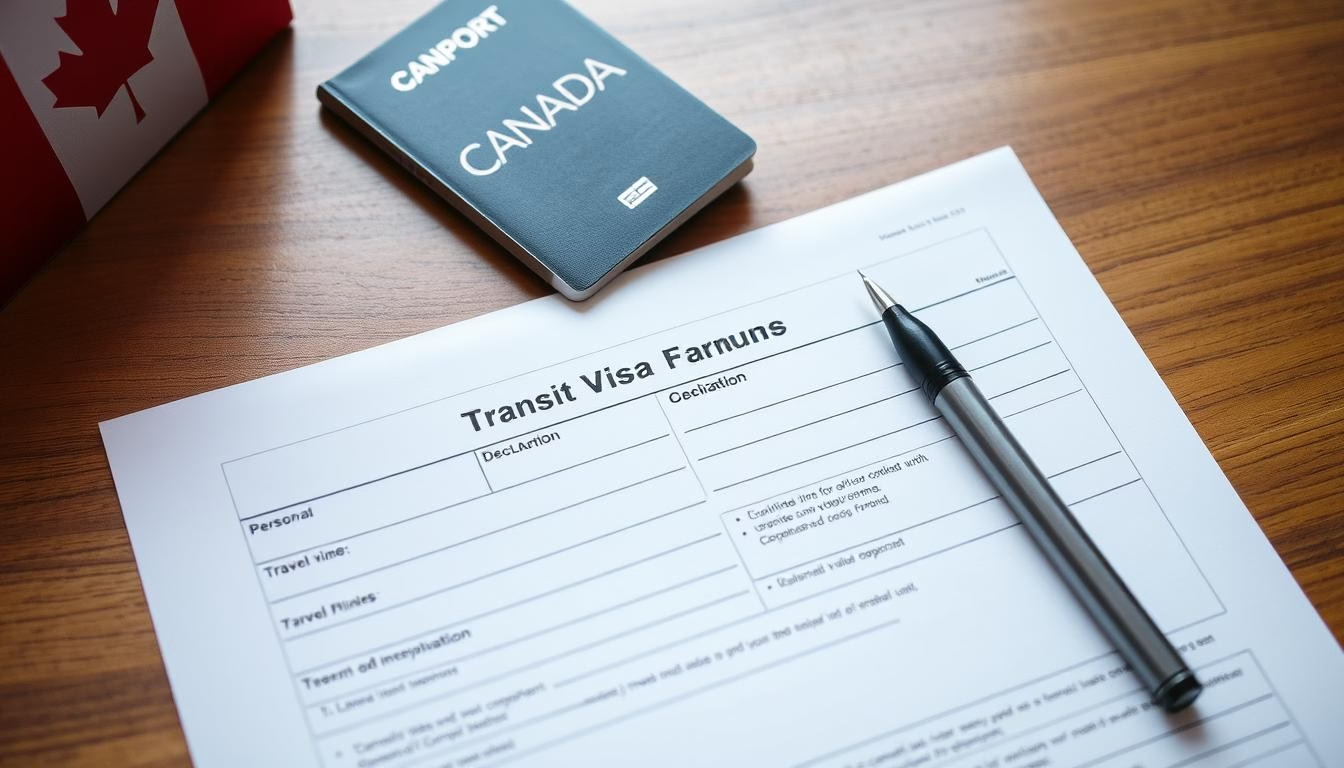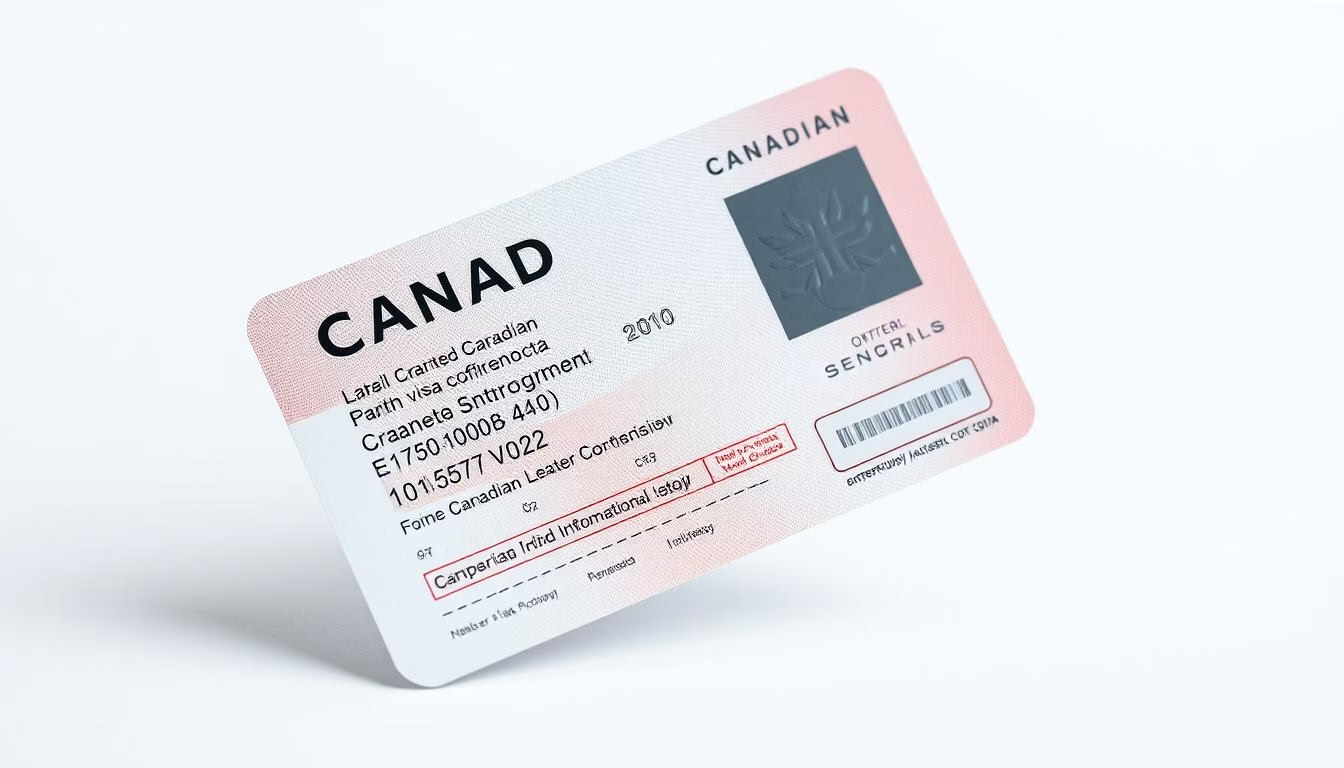Traveling through Canada can be a convenient option for many international travelers. However, understanding the transit visa requirements is crucial for a smooth journey.
Do you need a visa to transit through Canada? The answer depends on several factors, including your nationality and travel plans.
This comprehensive guide will walk you through the process of applying for a Canadian transit visa, covering essential requirements and procedures to ensure a hassle-free travel experience.
By understanding the application process and necessary information, you’ll be well-prepared for your journey.
Understanding the Canadian Transit Visa
Canada’s transit visa policy is designed to regulate the flow of travelers passing through its airports. To enter or transit through Canada, most people need a visa or an Electronic Travel Authorization (eTA) – not both. If you are traveling through Canada by air, you must have an eTA or a transit visa.
What is a Canadian Transit Visa
A Canadian transit visa is a temporary document that allows travelers to pass through a Canadian airport while en route to their final destination in another country. This visa is specifically designed for individuals who will be in Canada for less than 48 hours and will not be leaving the airport transit area during their layover.
Who Needs a Transit Visa for Canada
Most foreign nationals require either a transit visa or an Electronic Travel Authorization (eTA) to transit through Canada by air. Understanding which one you need is essential. Citizens from visa-exempt countries typically only need an eTA rather than a full transit visa when passing through Canadian airports.
- Transit Visa Requirements: The Canadian government determines transit visa requirements based on nationality, travel document type, and method of transit (air, land, or sea).
- No Transit Visa Required: Transit visas are not required for those arriving by land or sea, but proper travel documentation is still necessary.
- Importance of Proper Documentation: Understanding whether you need a transit visa is crucial as airlines may deny boarding to passengers without proper documentation.
Types of Canadian Transit Visas
When traveling through Canada, understanding the types of transit visas available is crucial for a smooth journey. Canada offers two primary types of transit authorizations for travelers passing through its territories.
Electronic Travel Authorization (eTA)
The Electronic Travel Authorization (eTA) is a digital entry requirement for visa-exempt foreign nationals traveling to or transiting through Canada by air. It is electronically linked to your passport and is valid for up to five years or until your passport expires, whichever comes first.
Traditional Transit Visa
The traditional Transit Visa is a physical document issued to citizens of countries not eligible for the eTA program who need to transit through Canada. These visas are typically single-entry permits designed for short airport layovers and connecting flights.
| Transit Authorization Type | Description | Eligibility |
|---|---|---|
| Electronic Travel Authorization (eTA) | Digital entry requirement for visa-exempt travelers | Visa-exempt foreign nationals |
| Traditional Transit Visa | Physical document for transit through Canada | Citizens of countries not eligible for eTA |
Understanding which type of transit authorization you need depends on your nationality, passport type, and method of travel to Canada. The application processes differ significantly between eTAs and traditional transit visas, with eTAs being processed much faster.
Eligibility Requirements for Canadian Transit Visa
Understanding the eligibility requirements for a Canadian transit visa is crucial for travelers passing through Canada. To be eligible, applicants must demonstrate their intention to transit through Canada to their final destination.
Basic Eligibility Criteria
The basic criteria include having a valid passport with at least six months’ validity, confirmed onward travel tickets, and no criminal inadmissibility issues. Applicants must also prove they have sufficient funds for their transit period.
- Valid passport with at least six months’ validity
- Confirmed onward travel tickets
- No criminal inadmissibility issues
- Sufficient funds for transit
Exemptions and Special Cases
Certain exemptions and special cases apply. For instance, dual Canadian citizens must use their Canadian passport and do not need a transit visa. Travelers arriving by land or sea do not require an eTA but must have acceptable travel documents.
| Category | Requirement |
|---|---|
| Dual Canadian Citizens | Use Canadian passport, no transit visa needed |
| Traveling by Land/Sea | No eTA required, but valid travel documents needed |
It’s essential to note that border officials have the final authority to determine admissibility, even if a transit visa or eTA has been obtained.
Required Documents for Transit Visa Application
Understanding the documents needed for a Canadian transit visa is essential for a smooth application process. The following documentation is required to ensure a successful transit through Canada.
Passport Requirements
A valid passport is the primary requirement for a Canadian transit visa application. It must be valid for at least the duration of your intended stay in Canada and have been issued within the last 10 years. Additionally, it should contain at least two blank pages for visa stamps and immigration markings.
Supporting Documentation
Supporting documents include a completed and signed application form with accurate personal information and travel details. You may also need to provide financial documents demonstrating sufficient funds to cover your transit period.
Proof of Onward Travel
Proof of onward travel is essential, including confirmed flight tickets showing your complete travel itinerary, including your departure from Canada.
| Document | Description | Requirement |
|---|---|---|
| Passport | Valid for at least 3 months beyond transit date | Must have at least 2 blank pages |
| Application Form | Completed and signed | Accurate personal and travel information |
| Flight Tickets | Confirmed onward travel | Complete travel itinerary |
How to Apply for Canadian Transit Visa Online
Applying for a Canadian transit visa online is a straightforward process that requires attention to detail. To begin, you’ll need to create an account on the official Immigration, Refugees and Citizenship Canada (IRCC) website.
Creating an IRCC Account
The online application process starts with creating an account on the IRCC website. After account creation, you’ll need to log in using your credentials and select the appropriate application type for a transit visa.
Filling Out the Application Form
Filling out the application form requires careful attention to detail. The online form will ask for personal information, travel history, employment details, and information about your planned transit through Canada.
Uploading Required Documents
When uploading required documents, ensure all files meet the specified format requirements (typically PDF, JPEG, or PNG) and size limitations. Required document uploads typically include your passport scan, photograph, travel itinerary, and any supporting documentation relevant to your transit purpose.
Submitting Your Application
After completing all sections and uploading documents, you’ll need to pay the application fee using an accepted payment method. The system will generate a confirmation receipt after successful submission, which contains your application reference number.
Applying for Canadian Transit Visa Offline
If you prefer to apply for a Canadian Transit Visa offline, start by visiting the IRCC website to download the relevant application forms. The main form required is the IMM5257 (Application for Temporary Resident Visa), along with the family information form IMM5645 and potentially other supplementary forms.
Downloading the Application Forms
The offline application process begins with downloading the appropriate application forms from the official Immigration, Refugees and Citizenship Canada (IRCC) website. Ensure you download all the required forms to avoid any delays in processing.
Completing the Paper Application
When completing the paper application, use black ink and print clearly, ensuring all information matches exactly what appears in your passport and supporting documents. Answer all questions completely, and if a question doesn’t apply to you, write “N/A” rather than leaving it blank.
Submitting to a Visa Application Center
After completing the forms, gather all required supporting documents, including your passport, photographs, proof of travel arrangements, and financial documents. Locate your nearest Visa Application Center (VAC) through the IRCC website and submit your application.
Transit Visa Application Fees and Payment Methods
When applying for a Canadian transit visa, understanding the associated fees and payment methods is crucial.
Current Fee Structure
The current fee for a Canadian transit visa application is CAD $100 per person, regardless of age or nationality. It’s essential to check the official IRCC website for the most current information as fees are subject to change.
Fee Exemptions
Certain categories of applicants may qualify for fee exemptions, including diplomatic passport holders and participants in specific international programs. Children under certain circumstances may also be eligible for reduced fees or exemptions.
Acceptable Payment Methods
For online applications, major credit cards like Visa, MasterCard, and American Express are accepted. When applying at a Visa Application Center (VAC), payment options may include credit cards, debit cards, bank drafts, or money orders.
Processing Times and Application Status
To ensure a smooth journey, it’s essential to know the processing times and how to check the status of your Canadian transit visa application.
Standard Processing Timeframes
The standard processing times for Canadian transit visas typically range from 2 to 4 weeks. However, this timeframe can vary significantly based on your country of application and the current volume of applications being processed.
- Processing times are calculated from the day the complete application is received by Immigration, Refugees and Citizenship Canada (IRCC) or the Visa Application Center.
- The earliest you can apply for a transit visa is 6 months before your intended travel date, while for seafarers, it’s 9 months.
- It’s recommended to apply at least 30 days before your planned departure to allow for potential processing delays.
Checking Your Application Status
You can check your application status online through the IRCC website using your application number and personal information provided during submission.
For paper applications submitted at a Visa Application Center (VAC), you’ll receive a tracking number that can be used to monitor your application status through their tracking system.
Expedited Processing Options
In limited emergency situations, such as serious illness or death in the family requiring urgent travel through Canada, expedited processing may be available.
- To request expedited processing, you must submit a written explanation of your emergency circumstances along with supporting documentation.
- IRCC does not guarantee expedited processing even in emergency situations; decisions are made on a case-by-case basis depending on the urgency and available resources.
Special Considerations for Transit Travelers
Traveling through Canada, whether for a short layover or a longer transit, involves certain considerations. Transit travelers must be aware of the regulations and requirements to ensure a smooth journey.
Traveling with Children
When traveling with children through Canada, additional documentation is required. This includes birth certificates and, if traveling with only one parent or guardian, a consent letter from the absent parent. Immigration officers may question children to verify their relationship with accompanying adults as part of Canada’s efforts to prevent child abduction and trafficking.
Customs and Border Regulations
Even as a transit passenger, you must comply with Canadian customs regulations. Prohibited items include certain foods, plants, animals, and weapons. Transit passengers must declare all goods in their possession, even if they don’t plan to leave the airport. Failure to declare items can result in confiscation, fines, or denied entry.
Connecting Flight Requirements
Understanding connecting flight requirements is crucial. Ensure you have sufficient connection time between flights (minimum 1-2 hours for international connections). Some Canadian airports require transit passengers to collect and recheck baggage, even for international connections. Verify your specific airport’s procedures before travel.
| Airport | Baggage Handling | Minimum Connection Time |
|---|---|---|
| Toronto Pearson | Recheck baggage | 1 hour |
| Vancouver International | Recheck baggage | 1.5 hours |
| Montreal Trudeau | Recheck baggage | 1.5 hours |
Transit passengers may need to clear Canadian customs and immigration even if they don’t plan to leave the airport secure area. If your connection requires an overnight stay or airport change, you’ll need to pass through immigration and may need additional documentation. Travelers with special needs, medical conditions, or mobility issues should contact their airline in advance to arrange assistance during transit.
Be aware that transit through Canada makes you subject to Canadian laws – even possession of items legal in your origin or destination country may be prohibited in Canada.
Conclusion
To ensure a smooth transit experience through Canada, understanding the visa application process is essential. Carefully preparing your application, whether online or offline, and ensuring accuracy will minimize delays. Apply at least 30 days in advance, and stay informed about any changes to Canadian transit visa requirements. Upon approval, review your visa details carefully and carry all necessary documents during travel.
Read Next:
Why Travel Insurance Is a Must for Every Trip




